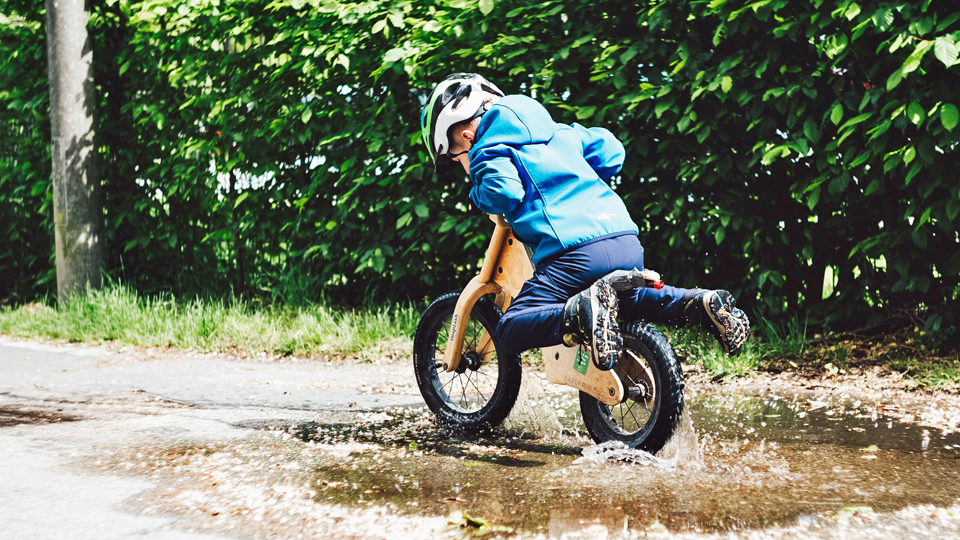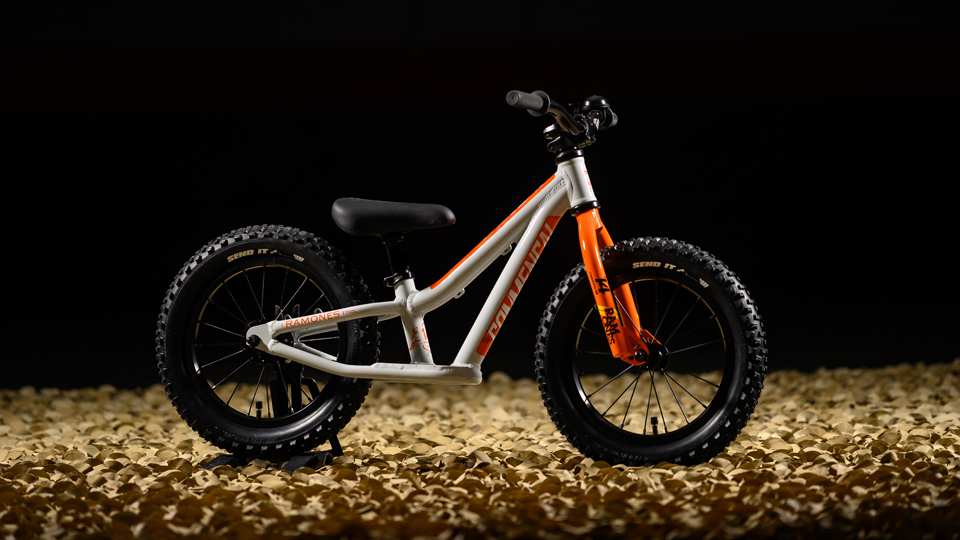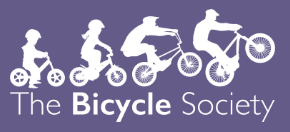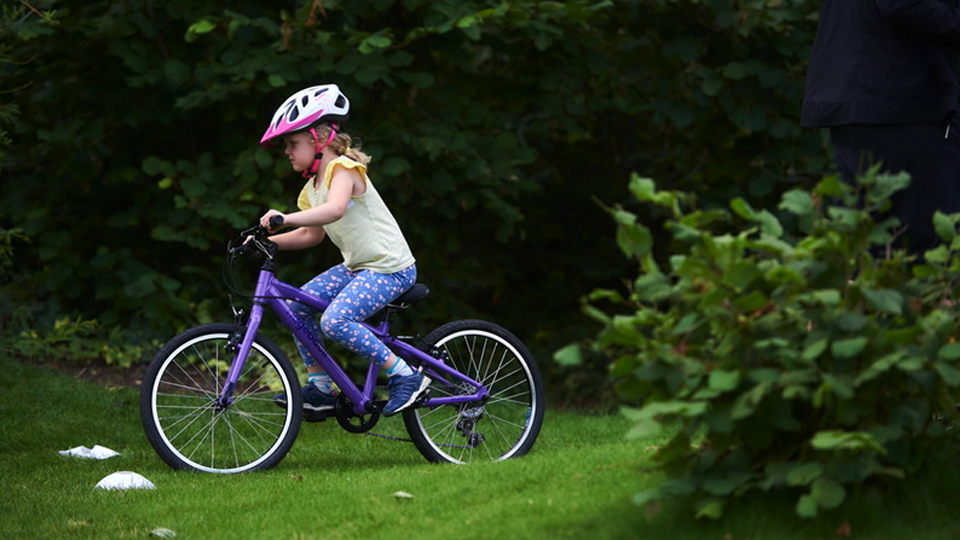Handy Guides
Which Tyres are best for a balance bike?

Learning to ride a bike is one of the best gifts you can give your child. Along with keeping them active, riding a bike provides children with confidence and independence while enjoying themselves outdoors.
If your child is eager to ride a bike, then nurture their enthusiasm and get them off to a flying start with a balance bike! Having become increasingly popular over the years, balance bikes are the perfect way to introduce your child to cycling, without them having to worry about pedalling. Allowing your child to master the art of balancing allows them to become familiar with how their body moves around the bike, which sets your child up for a seamless transition to begin pedalling, when they’re ready, of course!
Just like adult bikes, balance bikes come in all shapes and sizes with varying features, including tyres. While you may not give them a second thought, the tyres on your child’s bike can transform their experience of riding, offering more comfort, stability and confidence! The smallest balance bike tyre size is 10” with the most common size being 12” in size; however, there are a few different types to choose from Pneumatic and EVA foam compounds. We’ll delve into the advantages and disadvantages of these different compounds so you can choose the best for your child’s bike.
Pneumatic (Air) Tyres
Arguably the most popular choice for balance bikes is pneumatic tyres. As with pedal bikes, pneumatic tyres are inflated with air so the rubber material is able to deform to the terrain and absorb impact to offer, overall, more comfortable ride.
There is a wide variety of tyre treads to choose from so you can choose the best type for the terrain your child will be learning to balance on. The tread pattern and flexible nature of rubber ensure a decent level of traction between your child’s balance bike, and the ground they’re exploring. This traction provides increased stability for your child and instils heaps of confidence in them to carry on progress their skills and carry on riding bikes. Another big advantage of pneumatic tyres is their lifespan, as rubber far outlives EVA foam and plastic tyres.
However, like the adult version of air-filled tyres, they are prone to suffering from flats which can be a nuisance when you’re out and about. Top tip: If you pop some tyre sealant in the tyre before you inflate it, this can help reduce the risk of getting a flat tyre! Another disadvantage of pneumatic tyres is that they are heavier than foam and plastic tyres. While some parents may argue that it makes the bike heavier for the child to manoeuvre, the general consensus is that a heavier tyre not only provides additional stability, but the additional weight is totally forgotten about when your child is whizzing around with a grin from ear-to-ear.
EVA Foam Tyres
A lighter and more affordable option over the pneumatic tyre is an EVA foam compound. These tyres aren’t air-filled, instead, they are filled with a hard rubber-type foam, which makes them lighter. The solid construction of these tyres retain their shape over time and they’re puncture-proof!
However, the rigid construction means they’re less compliant than pneumatic tyres, which can result in a bumpier ride, especially on gravel roads and for daredevils who like to roll off kerbs, lumps and bumps! Due to their stiffness, EVA foam tyres are best suited for smooth paved paths and for smaller riders who would benefit from a lighter option.
What level of cycling is my child?
Throughout their formative years, children change both physically and mentally into more independent people. Structured to educate children and parents from a first encounter, our courses cater for emerging riders on balance bikes, to more advanced skills and progression in any discipline of cycling, or even building confidence to start cycling to school. As children develop and grow, so do our courses. We tailor our courses to suit your child’s skill level, so they become more confident, competent and consistent riders. Embedded within each stage of riding is developing awareness, increasing levels of safety and, of course, lots of fun to inspire a life long passion for a life on two wheels.
Beginner: Emerging Rider (18 months – 3yrs)
The Bicycle Society’s Emerging Rider course consists of 45-minute classes with songs, colouring-in and, of course, plenty of balance bike fun. Throughout the class, everyone will have the perfect opportunity to socialise with their children while experiencing the joys of cycling. The emotional connection with bikes is fostered at such an early age that we simply help nurture their interest further in the Emerging Rider course.
This foundation phase of development is where children learn how to hold, walk with and eventually balance on a bike. The emphasis at these sessions is on positive experiences and developing a genuine relationship with a bike. Children become more comfortable with balance bikes and will start moving independently.
Grownups will find it enjoyable with easy to follow instructions and will leave with a wealth of knowledge about how to practice and continue nurturing their child’s relationship with the bike.
Developing Rider (4yrs +)
This magical phase is where children begin to take to the pedals for the first time. Personalised learning takes place in small groups, where skills and balancing techniques are taught through creative games and engaging challenges.
It is vital that when a child learns to cycle, they learn with confidence. We understand that children progress at varying rates, which is why we offer a ‘Learn to Ride Guarantee’. If by the end of the final session any child hasn’t learned to start, ride for 30 seconds and stop (with brakes!) by themselves, they receive classes for FREE until they can ride on their own.
Securing Rider ( 5yrs +)
Once your child can ride a bike independently, the next step is to make sure they can control it! Securing Rider courses introduce new habits while reinforcing valuable practices to inspire confidence.
The course covers many essential skill areas, including braking, cornering, riding one-handed, using gears and raising awareness while getting plenty of exercise. This stage of cycling takes place in parks and playgrounds. Learning how to ride among other park users, being respectful of the surroundings, climbing trees and getting to be a kid is all part of the Securing Rider course, and most importantly of all, it will prepare children for cycling safely on the road.
Mastering Rider ( 9yrs +)
The Mastering Stage is the final stage of The Bicycle Society’s cycling programme. Throughout the course, children will apply the skills they learnt during the Securing Stage while making independent decisions about sharing space on the road and how to keep safe when cycling.
In order to become a master rider, children will experience a variety of styles of riding including BMX, trick-riding, mountain biking and road cycling for regular trips to friends’ houses, school or simply for pure fun. This course will inspire your child to start applying multiple skills in lots of different locations: skills tracks, quiet residential roads and technical terrain. You can never do everything a bicycle has to offer, but this phase helps explore every option in your area as a family or group of friends.
Why choose a balance bike first?

Their first bike sticks in everyone’s memories. So, here are some key points to help you choose the model that best suits your child. For the smallest (under 95cm) we always recommend opting for a balance bike.
For slightly older/taller kids (over 110cm) we normally recommend a pedal bike. However, for those who measure between 95cm and 110cm, both options are a possibility. The balance bike allows kids to learn to balance on two wheels. It clearly gives confidence to the child; they feel safe and can progress at their own pace. The pedal bike has other advantages. It makes the child feel like a grown-up and also enables longer rides once they’ve got the hang of it. And stabilisers mean it’s safe to try. To see the different variations of pedal bikes for little ones, head to the “First pedal bikes” section. If you’re in need of a balance bike, you’ve come to the right place! We have two wheel sizes available 12-inch (for a child measuring between 90cm and 105cm) or 14-inch (between 95cm and 110cm).
All of our balance bikes are designed to evolve alongside the child. First and foremost, thanks to the foot platform shape, the child can fully put their feet up when they start to gain confidence. It has been specifically designed to leave room for their calves during pushing. All the while leaving necessary space for the feet when they are placed on it. It’s also revolutionary as it’s possible to mount a disc brake on the back, useful for when things get serious!
They might as well learn the right reflexes and rules from the start. With the components, all have been carefully selected in accordance with three criteria:1) They must be specific to the shape of a child, their size and weight. The handlebars, for example, have an external diameter of 22mm so that the child can hold them securely.2) No short cuts on solidity. It’s impossible to ask the young ones to take care of their bikes. We, therefore, use fewer plastic parts as possible, unlike bikes sold in supermarkets for example.
It’s good to know that our bikes can be used by their little sibling(s) and that they will resell well on the second-hand market, even after several years of use.3) They must have real mountain bike parts so that the child has a safe and fun first experience of riding MTB. For example, we chose knobbly tyres that resembled those on our adult bikes the most.


